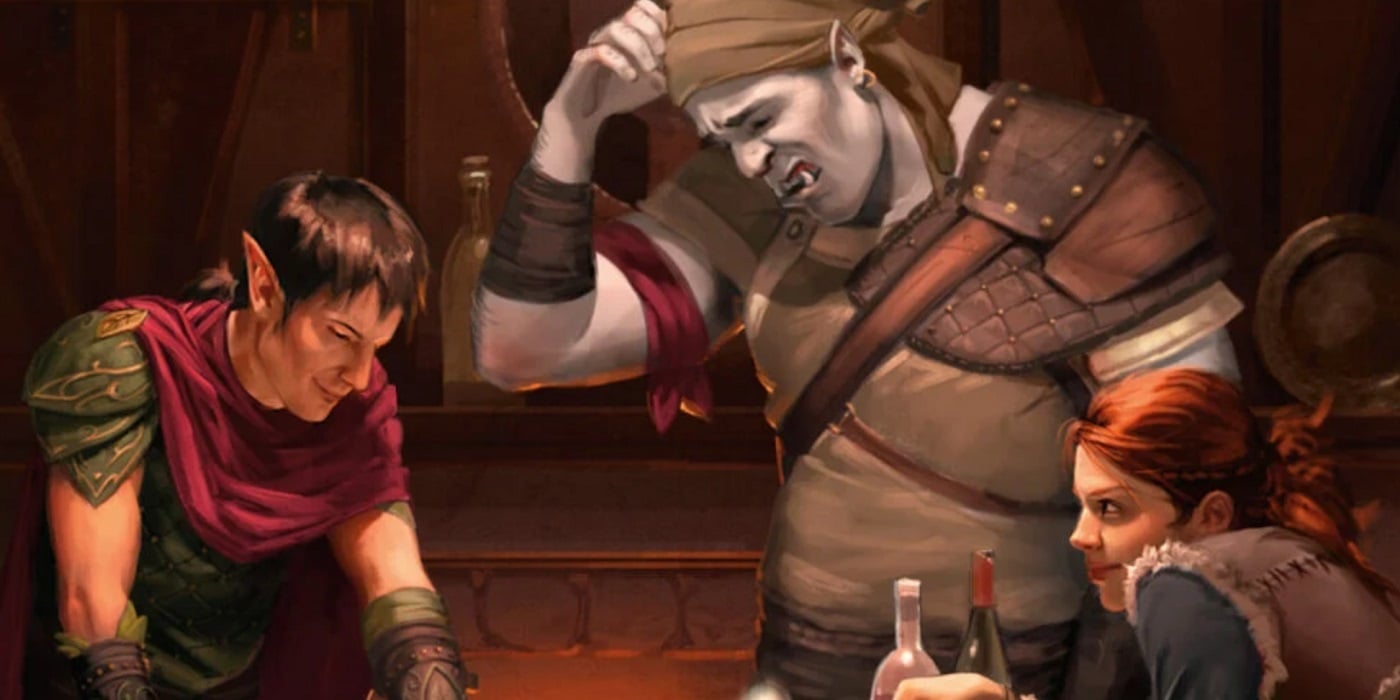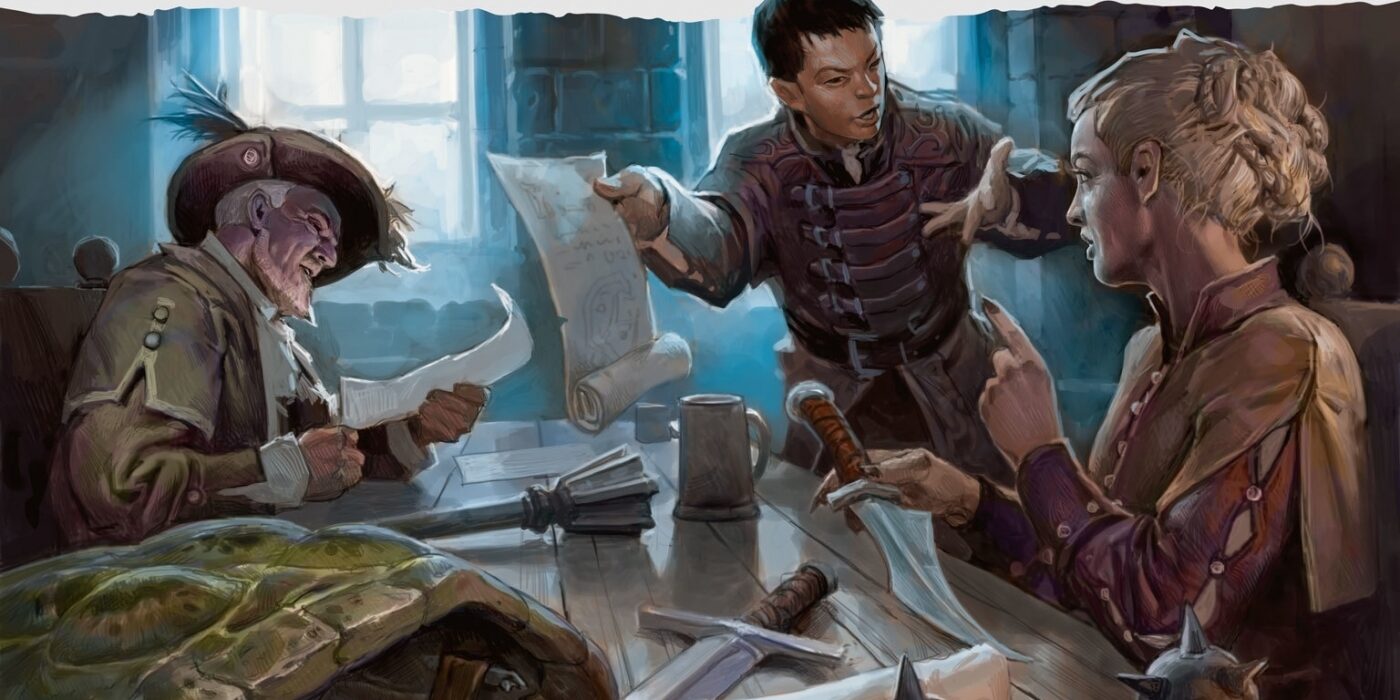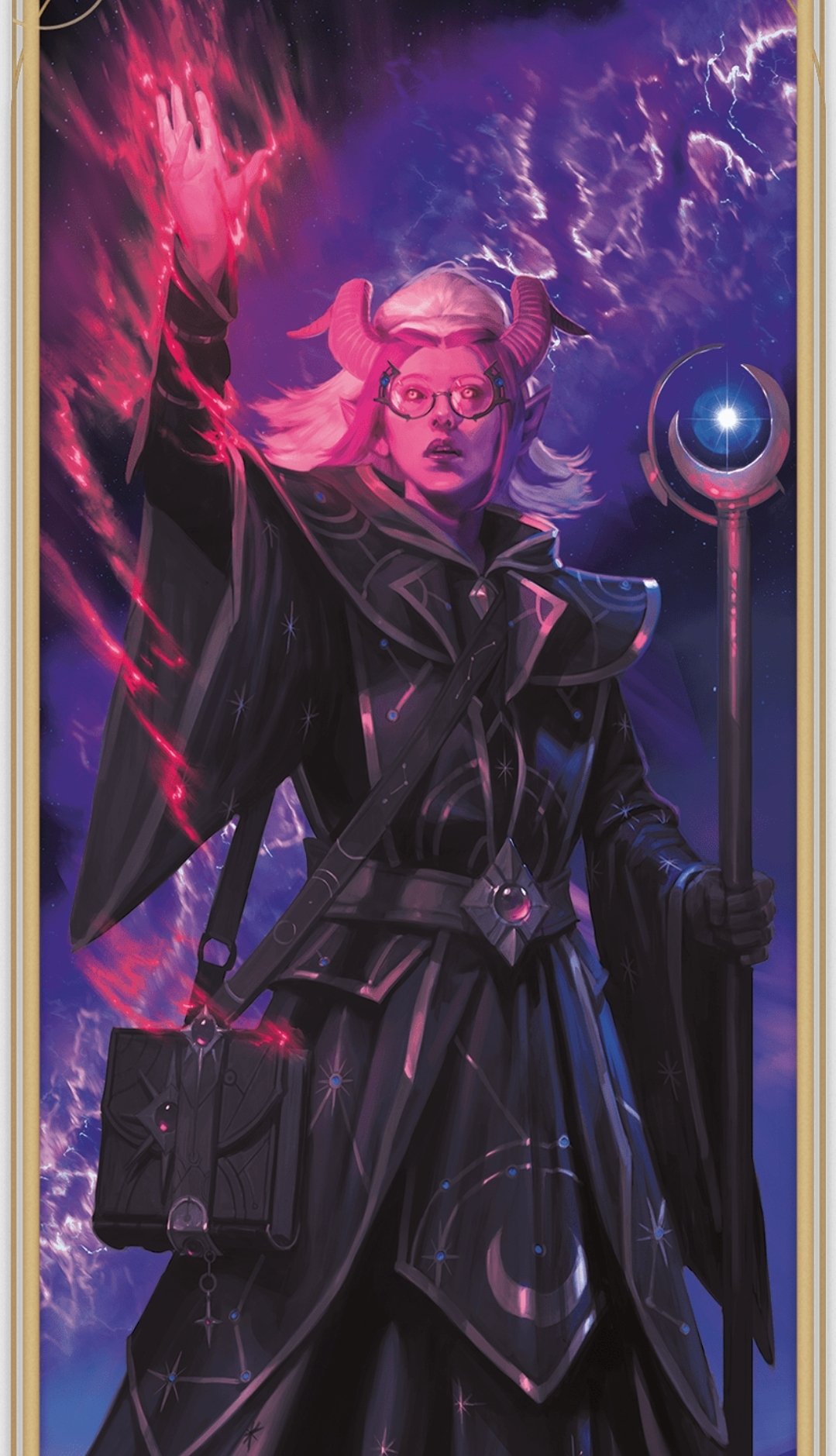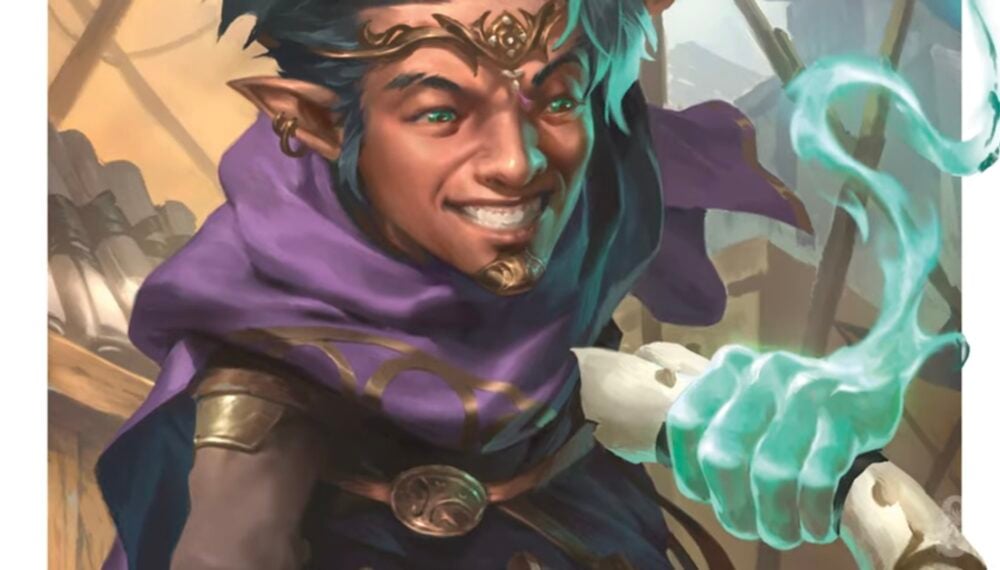There are a lot of different campaign styles out there. From West Marches to linear railroads and beyond. Here are five you should try.
Campaign styles can change the way your whole game plays. They’re kind of like the framework for what you and/or your party does. Running a dungeon-crawl style campaign is much different from running an intrigue-laced city campaign, for instance.
And while there are as many campaign styles out there as there are kinds of stories, a few “genres” exist—they’re more descriptive categories than anything with a hard and fast set of rules. But they highlight some of the many many different ways there are to play RPGs. Here are a few more campaign styles to consider for your next campaign.
Pointcrawl

A pointcrawl is a relatively newer campaign construction (only about 12 or 13 years old). It evolved out of hexcrawls and is, at its heart, both campaign style and way of reading a map. As the name suggests, it’s about moving from point to point. Much like a subway map, a point crawl map lists points of interest that have been discovered. And importantly, looks at how they’re connected.
This kind of campaign style has some features in common with games like Zork, where each point is a narrative node with obvious exits to nearby sites. For instance, in a city pointcrawl, the thieves’ guild’s den might lead to the sewers and the docks. And each of those points would have something interesting and relevant to adventures.
Another big factor in pointcrawls is the element of discovery. Players “unlock” locations on the map by learning rumors and following up on campaign hints. Investigating rumors of ghosts in the forest might lead to players unlocking a “Ruined Tomb” or something like that.
It feels like a very game-ified way of exploring the world, but it can be real exciting/empowering for players who get a sense of uncovering more of the map and then being able to travel to it. It streamlines things to—you go from point of interest to point of interest, that way you don’t have to worry about weird encounters or empty spaces unless you want to.
West Marches

This is a campaign style you’ll soon see in action, thanks for Critical Role’s Campaign 4. But you can try it yourself! It’s a game experiment as much as it is a campaign style. The heart of it is that it’s a playstyle designed to accommodate many players. It’s ideal for big groups of people who are into playing D&D.
It takes an “open table” format. Meaning you play with whoever shows up. In the original West Marches campaign, players were even behind the scheduling of the sessions (though your scheduling woes may vary)—but the heart of the original idea was that you are adventurers that start in one corner of the map. A place of relative safety, be it a city/outpost/fortress/whatever. From there, you can venture into the West Marches to see what you discover.
Since then, the campaign style has evolved considerably. The more modern interpretation is that a West Marches game involves rotating tables and DMs. So you’re not just running one-shots—you’re building world lore as you go, you’re having adventures that build into larger narratives, but it all happens organically. And the story focuses very much on that the players are out there doing. And what happens to the West Marches as a result.
GM-Less/Oracle-Driven

Sometimes though, you might not even need a DM. While 5.5E isn’t inherently built to be played GMless, that hasn’t stopped people from doing it nonetheless. Because this is RPGs, you can do whatever you want as long as you’re willing to put in the work. And running a GMless game is as much an art as it is any strict set of rules.
It might take a little getting used to if you’ve never played a GM-less game before—solo RPGs can be a great way to get experience doing that. But in a nutshell, all you have to do is find or make your own oracle tables—these are random tables that you can roll on to see what happens. And importantly, you don’t have to do everything the dice say, you get to decide what makes sense—but it’s a lot of rolling the dice and interpreting the results.
This can work for a number of different campaign/adventure styles. You can consult your oracle s whenever you get to a new town, or even whenever you enter the next room of a dungeon. It’s a lot of procedurally generating the world and discovering what you get as you go. But it can be quite fun with the right group.
Megacampaign

For those of you who are lucky enough to have moderate to large friend groups who all want to play RPGs together, there’s the Megacampaign style. This is a campaign that takes place usually all in one area (kind of like the West Marches) but with dedicated parties and a very dedicated DM (or small number of DMs).
Say you have three groups—what each group does affects the world; and more importantly, affects the other parties as well. This can be a way to play with antagonistic parties. I’ve seen GMs run games like the World of Darkness this way, with a Vampire Group and a Werewolf Group and a group of hapless Hunters all in the same city.
In D&D you might all be after the same ultimate goal. Or you could just be all trying to acquire things for your adventuring patrons or to stop the end of the world or whatever. But the point is, in a megacampaign, the parties interact with each other often indirectly. On rare occasions, your DM might even have someone from one party come guest in another party’s games—but it’s about parallel narratives that sometimes intersect in interesting, explosive ways.
Meatgrinder

Then there’s the Meatgrinder campaign. This is as much an ethos as it is a strict campaign format—but in a nutshell, it’s about harsh but fair combat. It’s often thought of as D&D on hardcore mode; death saving throws might be harder, there might be rules against bringing the dead back to life (or at least making it harder); enemies will often attack downed PCs ensuring that they confirm their kills, traps might be extra lethal, and so on.
Believe it or not, it can be a lot of fun. It’s like playing a roguelike where you know that eventually you’re just gonna die. Personally I find a campaign like this is a great way to get over the fear of something bad happening to your character—it’s going to. And similarly, for DMs, this is a great way to get over the fear of being mean to player characters. It’s hard!
If you’re DMing for your friends and the bad guys start to win, you can feel the desire to pull your punches, but in a meatgrinder campaign, you’re explicitly there not to. And even if you don’t play that way all the time, it can be a great way to learn how much more tolerance there is within the system for DMs to not pull punches on occasion and still keep the story feeling fun and fair.
Subscribe to our newsletter!
Get Tabletop, RPG & Pop Culture news delivered directly to your inbox.
Just have everyone roll up backup characters in advance. Maybe have two extra characters per session. And make every encounter meaningful by going for blood. It is fun and furious and very combat-heavy. Though not always! Famously, the Tomb of Annihilation is kind of like this.
What campaign formats have you tried?
Don’t Miss:
Read more at this site
